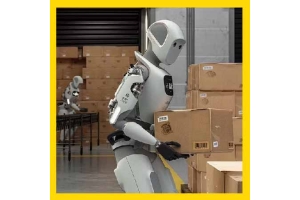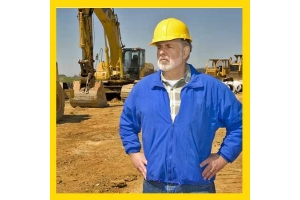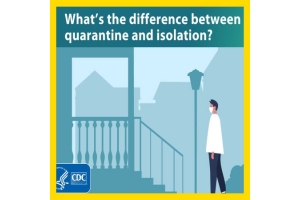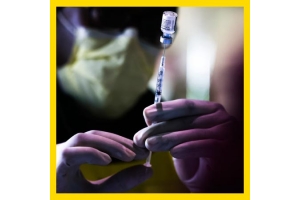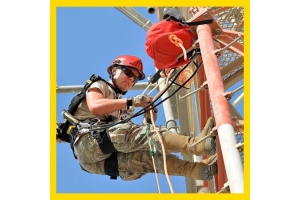Currency
-
December 27, 2020This guidance was updated on 26 November and comes into force on 2 December. It is for everyone who has been identified as clinically extremely vulnerable (via letter from the NHS or GP).
The guidance has been updated to support the clinically extremely vulnerable in protecting themselves from exposure to coronavirus . It replaces previous guidance on shielding that was in place during the 4-week period of National Restrictions. The guidance is set out in 2 parts:
● Updated advice on protecting the clinically extremely vulnerable, based on the tiers of local restrictions in your area. The advice sets out the additional things people at the highest risk from COVID-19 are advised to do to keep themselves safe for each tier.
● Updated shielding advice that is more targeted and will only apply in some of the worst affected areas and only for a limited period of time. People are only advised to follow shielding advice if they receive a new written shielding notification. -
December 27, 2020Workers who spend a great deal of time working at height depend on their fall protection PPE harnesses. They want their gear to be comfortable and lightweight, not hot and heavy. Some harnesses can claim they are lighter weight, but that doesn’t always equate to comfort, especially for workers of varying shapes and sizes. Let’s explore some of the things that can make fall protection harnesses more comfortable, lighter weight and easily incorporated with other PPE.
Since “falls from height” rank first in cause of death for the construction industry, it’s critical that workers are appropriately protected. These features will make it easier for workers to be compliant by encouraging them to wear their gear properly and keep themselves and the jobsite safe:
■ Ergonomic safety
■ Lightweight and Flexible
■ Integration with other PPE
Ergonomic Safety
Comfort is key to performance and that is where ergonomics comes in. -
December 27, 2020Both Visual Literacy and Human and Organizational Performance (HOP) emphasize slowing down with purpose.
As humans, about half of our personalities are wired more towards action, fast-paced, and getting things done, making it harder to slow down and get help. The other half of us are wired more toward needing additional information, being more methodical. This makes it harder for us to speed through tasks. For those of us who don’t naturally slow down, factors in addition to our personality wiring include production pressures, time pressures, peer pressure, rewards for output, customer demands, and a focus on outcomes.
Those are external drivers of moving too fast. The consequences can be serious, leading to near misses, minor and serious injuries, even fatalities. Rushing through jobs can lead to overlooking hazards, taking risks, working with faulty equipment, dispensing with personal protective equipment (PPE), short-cutting safety rules and procedures, and half-hearted -
December 27, 2020As several biotechnology and pharmaceutical companies begin to apply for and receive emergency use authorization from the Federal Drug Administration (FDA) for their COVID-19 vaccines, the U.S. Centers for Disease Control and Prevention (CDC) has activated the distribution phase of its Operation Warp Speed Strategy for Distributing a COVID-19 Vaccine. The playbook for this phase of the plan is complex and relies on several critical components including the need for appropriate IT architecture to support an extensive data monitoring infrastructure.
The data monitoring infrastructure will be relied upon to identify when a person needs a potential second dose, to monitor outcomes and adverse events, and to account for products the U.S. government is spending billions of dollars to research, develop and produce. Organizations that administer vaccines will need the capability to accurately capture and share data at the federal, state, local and tribal levels to ensure efficient management -
December 20, 2020Washington — Five Senate Democrats are imploring the Mine Safety and Health Administration to lower its exposure limit for crystalline silica – a carcinogen found in sand, stone and artificial stone.
In a letter dated Nov. 20 and addressed to MSHA administrator David Zatezalo, Sens. Joe Manchin (WV), Sherrod Brown (OH), Bob Casey (PA), Tim Kaine (VA) and Mark Warner (VA) write that the findings of a recent Department of Labor Office of Inspector General report contending MSHA’s silica exposure limit is out of date “illustrates the need for urgent action.”
The agency’s silica exposure limit of 100 micrograms per cubic meter of air was established in 1969. Although OSHA has since lowered its silica exposure limit to 50 micrograms per cubic meter, “both OSHA and NIOSH warned that 50 μg/m³ is the lowest feasible limit, not the safest,” DOL OIG states in the report released Nov. 16.
Further, DOL OIG says a recent increase in progressive massive fibrosis – the -
December 20, 2020The Centers for Disease Control and Prevention (CDC) and its National Institute for Occupational Safety and Health (NIOSH) provided updated resources on coronavirus disease 2019 (COVID-19) for employers. These include a fact sheet on case investigation and contact tracing, critical infrastructure sector response planning, and information for school administrators and school nurses.
The CDC offered a cleaning, disinfection, and hand hygiene toolkit for school administrators, as well as disease information for school nurses. It also explained that successful cleaning and disinfection in schools requires administrators to develop and implement a plan, as well as maintain and revise it. The toolkit includes handouts and posters for cleaning and disinfecting school classrooms and other campus facilities. The EPA maintains current lists of disinfectants effective against SARS-CoV-2, the virus that causes COVID-19.
-
December 20, 2020PARK RIDGE, IL — Construction and demolition sites are among the most hazardous work environments, especially when multiple contractors and employers introduce operational complexities to a job site. A newly revised standard from the American Society of Safety Professionals (ASSP) and American National Standards Institute (ANSI) helps employers keep construction workers safe by describing best practices they can implement to take safety programs to the next level.
ANSI/ASSP A10.33-2020, Safety and Health Program Requirements for Multi-Employer Projects, identifies key elements an organization should use to create and manage a safety program in a shared construction project. The standard assists project owners, construction supervisors, contractors and equipment manufacturers. ASSP published the new standard as secretariat for the ANSI/ASSP A10 committee focused on safety requirements for construction and demolition operations.
“Risks on construction and demolition -
December 20, 2020Fire and rescue incident statistics for England, have been released by the Home Office for the year ending June 2020, containing statistics about incidents attended by the services (FRS).
In the year ending June 2020 FRSs attended 231,510 fire false alarms, a 1% increase with the previous year (229,961), and a 7% increase compared with five years ago (215,857), though a 19% decrease compared with 10 years ago (285,368).
Key results
● FRSs attended 549,913 incidents in the year ending June 2020. This was a 4% decrease compared with the previous year (573,776). Of these incidents, there were 156,128 fires. This was a 15% decrease compared with the previous year (182,661) with falls in all types of fires but particularly driven by a 20% fall in secondary fires now that the hot, dry 2018 summer is in the comparator year;
● There were -
December 13, 2020It would be fascinating to travel into the future and see what history will say about 2020 . As the year closes out, we all have experienced life-altering events that will be forever etched in our memories. Time will determine the impact of these events, but certainly “new normals” have and will be formed. Virtually every facet of our lives has changed – socially, financially and professionally.
The same is true of occupational safety and health (OSH) professionals. Throughout our careers, we have used our education and skills to help workers return safely to their families at the end of their workday. During COVID-19, many of us are using technology to perform those tasks from afar. We have had to learn new skills and alter our behaviors. We have all been challenged in new ways.
OSHA has been similarly impacted by the pandemic. Agency personnel have coped with COVID-19 while also working to help employers address hazards arising in essential industries. Like ASSP, -
December 13, 2020Even the most safety-conscious companies sometimes have workers that get injured or sick on the job.
Like many non-exempt businesses with 11 or more employees, you’re keeping an Occupational Safety and Health Act-required record of serious work-related injuries (requiring more than first aid) and illnesses via OSHA’s Form 300 — the Log of Work-Related Injuries and Illnesses.
You have seven calendar days to record an injury or illness after receiving word that a recordable incident occurred.
In general, it’s the employer’s call whether an injury or illness is work-related. But if the work environment significantly aggravates an employee’s pre-existing illness or injury, it counts as work-related and should be logged.
For several reasons — including tracking any emergent hazards and developing standards — OSHA monitors occupational injury and illness

